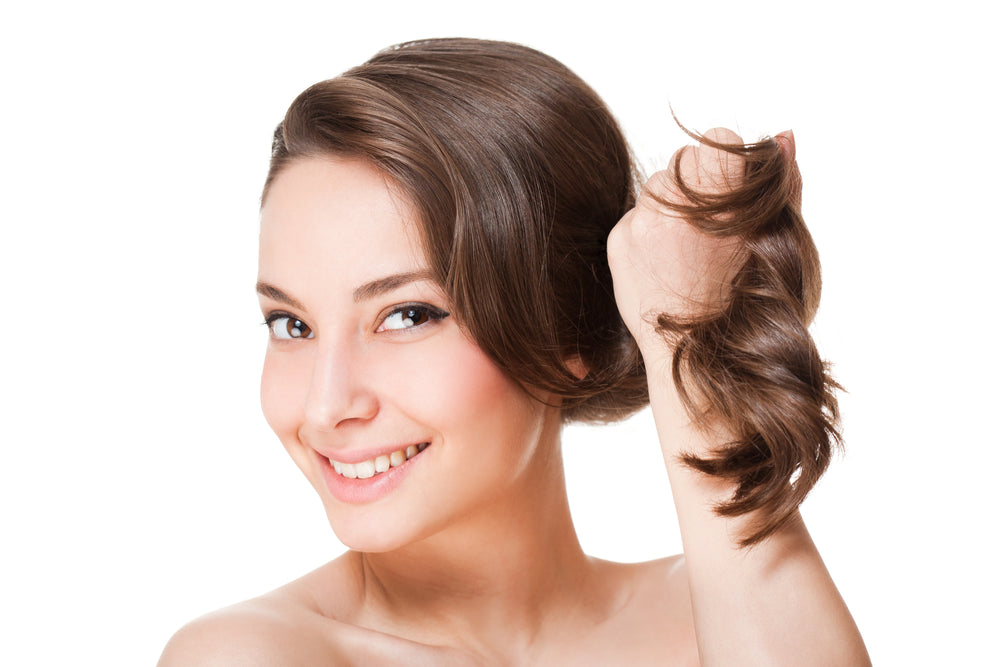You didn’t have to think about it before. You’d get a haircut, and a few weeks later, you’d need another one because your hair grew out so fast. You might have even thought it was a little inconvenient to have to trim it so often!
But now, you’re noticing a change. It’s subtle, but it’s there. Your hair doesn’t seem to grow as quickly as it used to. You were going for a thicker, fuller style, but your hair isn’t cooperating, which seems strange.
So you start digging into the research. How does hair grow, anyway? Is there something you can do to restore your hair to its youthful vigor? We created this guide to answer these questions and more.
In this article:
- Let’s Start with Hair Structure
- How Does Hair Grow?
- The 4 Phases of Hair Growth
- What Stops Hair from Growing?
- 7 Ways to Maintain Healthy Hair, Prevent Breakage, and Encourage Growth
- Frequently Asked Questions
Let’s Start with Hair Structure
To understand how hair grows—and how to encourage that growth—we have to begin with the hair strand itself.
Go ahead and pull one out to look at it, if you’d like! Unfortunately, you won’t be able to see much unless you have a microscope. Each hair strand consists of a shaft and a root. The root is surrounded by a hair follicle, which is connected to a sebaceous gland on your scalp.
The Shaft
Believe it or not, a lot is going on in that one little strand. The shaft is the visible part of the hair that sticks out of the skin, or what you’d be holding onto if you pick up a strand of hair.
The hair shaft is made up of dead cells that have turned into keratin (a type of protein) and binding material. This is why you don’t feel anything when your hair is cut—all those cells have been dead for some time.
The shaft itself has three layers:
- The medulla: This is the deepest layer of the hair shaft. It exists only in large, thick hairs and has a soft, thin core of transparent cells and air spaces.
- The cortex: This is the middle layer. It forms the bulk of the strand, giving hair its texture and strength. It also contains the pigment (melanin) that determines the hair’s color. This pigment is produced by cells in the root (more on that below).
- The cuticle: This is the thin outer layer of the hair shaft. It’s what you see when you look at the hair. It helps protect the strand and, when healthy, gives hair its shine. It also helps trap moisture within the strand, making it look soft and smooth.
The Root
If you pull out a strand of hair from its base in the scalp, you may notice a bulb or round ball attached to the end. That’s the root. Also called the “hair bulb,” it sits at the base of the hair follicle and contains the cells that help your hair grow.
The root also contains the melanocyte cells. These cells produce the melanin that gives your hair its color. How much melanin you have and what type determines what color your hair is.
There are two forms of melanin found in hair:
- Eumelanin: the dominant pigment in brown and black hair.
- Pheomelanin: the dominant pigment in red hair.
But what if I have blonde hair, you may ask? You still have these two types of melanin in the root, but you have less than those with darker hair shades. Gray hair results when the body slows down its melanin production to the point that there is no more color.
The Follicle
That root is surrounded by the hair follicle, which protects and nourishes it so the hair grows as it should. You can think of follicles as being like the pores in your skin. They are the openings in the scalp through which the hair emerges.
Did you know that, on average, babies are born with over five million hair follicles on their bodies? Estimates are that about 80,000 – 120,000 end up on the head. With that many follicles, you may wonder why you don’t have more hair. We’ll get to that later in this guide.
The follicle’s job is to grow your hair. It looks like a long tube in your scalp. The shape of that tube affects the texture of your hair. Straight follicles will grow straight hair, whereas curved follicles will grow curly hair.
The Sebaceous Glands
Each hair follicle is connected to a sebaceous gland, just like your skin's sebaceous glands. These are the oil-producing glands that help your skin and hair retain moisture, which in turn protects your hair from frizz and breakage.
Each hair follicle is also attached to a tiny muscle that helps the hair strand stand up. Nerves around the follicle sense movement. These nerves are the reason you can feel the wind blow through your hair.
How Does Hair Grow?
 Image via Shutterstock
Image via Shutterstock
In general, hair grows because new cells are constantly forming in the hair bulb. As they multiply, they stick together and harden, becoming part of the hair strand itself.
The process is ongoing. These cells are always growing, hardening, and sticking to the hair shaft as it’s pushed up out of the skin. Scientists estimate that a single hair on your head grows at a rate of about one centimeter per month. Hairs on other parts of the body—like eyelashes, eyebrows, and body hair—grow at a slower pace.
As long as new hair cells continue to grow and multiply in the hair bulb, the hair continues to grow. But there is another part to this process—when the hair rests.
The 4 Phases of Hair Growth

The growth process in the human body is a fascinating one. For instance, how did your arms know how to grow to a certain length and then stop? Or your body to grow to a certain height and then quit?
Your hair also has its own schedule of growth and rest. Understanding this process can help you learn more about why you may be losing more hair than you’d like and what you can do to promote healthy hair growth.
1: Anagen, the Growing Phase
During this phase, your hair is working hard to produce new cells and continue to grow. Scientists say that at any point in time, about 90 percent of your hair strands are in the growth phase, meaning that most of your hair is growing most of the time.
The growing phase varies from person to person, but generally, it can last several years. That's why you can grow your hair down to your waist if you want to. As long as you don't cut it, it will keep going.
It's different for your eyelashes, eyebrows, and other types of body hair. Which is good, because no one wants waist-long eyebrows. For these types of hairs, the growing phase lasts only about 100-150 days.
2: Catagen, the Transition Phase
This is the shortest phase in the growing process. In this phase, the root separates from the structures around it (called the papilla) that feed it blood and nutrients. It takes about two to four weeks for the root to completely separate. (It’s a long goodbye.) During this time, the hair growth slows and the follicle shrinks.
When the separation is complete, the blood is cut off and the hair prepares for its eventual flight into the world. Fortunately, only about five percent of the hairs on your head are in the catagen phase at any given time.
3: Telogen, the Resting Phase
This phase can last up to about three months. The hair strand is dormant and no longer growing, while the structures in the follicle are gradually pushing it out of the skin. During that time, though, it “rests,” as it doesn’t have to grow or do any other sort of productive work.
4: Exogen, the Shedding Phase
This is when the actual separation occurs. The hair is shed from the scalp and goes on its merry way down your drain. Often this shedding process is helped along by washing and brushing.
As the old hairs fall away, new hairs start to grow in the follicle, and the process starts over. That’s a good thing. The hair knows how to “renew” itself this way, as shedding makes way for new hairs that are younger, stronger, and healthier.
Once the old, non-growing hair is gone, the exogen phase ends, and new hairs grow in their place. These new hairs start out in the anagen, or growing, phase, and they’ll continue to grow for several years.
Remember, hairs in the resting (telogen) phase are no longer growing. The continuous cycle of old hairs falling out and new hairs beginning to grow is what gives the effect of your full head of hair “growing.” Without it, your hair would eventually stop growing.
In total, the exogen phase lasts between two and five months. And in case you were wondering, it’s normal to lose about 50-100 hairs per day.
What Stops Hair from Growing?
 Image via Shutterstock
Image via Shutterstock
Reviewing the process above, all seems perfectly normal. So why does it seem that your hair isn’t growing the same as it used to?
Many things could be going on. First, certain factors could be interfering with the growing phase and stopping your hair from growing. These include the following:
Genetics
Take a look at your biological parents, or pull out some pictures of them. You inherited your genes from them, and genes have a lot to do with hair growth and hair loss.
Both men and women can suffer from a type of hereditary hair loss called "androgenic alopecia," "male pattern hair loss," or "female pattern hair loss."
Inherited genes shrink the hair follicles when you reach a certain age. Eventually, these follicles stop growing hair, which means you will have fewer product hair follicles on your head.
In men, the first sign of this type of hair loss is usually a receding hairline or bald spot at the top of the head. In women, this type of hair loss typically shows up as an overall thinning or widening of the part.
Can it be treated?
Treatment can help slow or even stop this type of hair loss. If you notice symptoms, look into treating the issue right away, as the earlier you begin, the more hair you will save. Talk to your doctor about potential treatment options and what type of treatment will work best for you.
Age
As we age, it’s common to notice that hair growth slows down. Unfortunately, while we know a lot about skin aging, hair aging has only recently come to the attention of researchers. As we all become more interested in staying as youthful as we can for as long as we can, scientists interested in the biology of hair growth are paying attention.
What we do know is that nearly everyone has some hair loss with aging. Hair strands become smaller and have less pigment, which is why they begin to turn gray. The thick hair of the young person changes to become thin, lighter-colored hair.
Can it be treated?
Already, the market is responding to consumer demand for hair anti-aging strategies. While there are many consumer products that claim to delay aging, it’s always best to discuss your hair loss with your doctor and whether there are treatments that could work for you.
Stress
You may have noticed more hair loss during a particularly stressful period in your life. Were you just imagining it?
The Mayo Clinic states that stress and hair loss can be related. That’s because when the body is stressed, it releases certain hormones that can negatively affect hair growth. These hormones may push greater numbers of hair follicles into the telogen (resting) phase, for instance, and within a few months, these hairs will fall out.
The National Institutes of Health also notes that long-term or chronic stress puts people at risk for a variety of health problems, including hair loss. They also mention that the release of a form of the stress hormone cortisol inhibits hair regrowth.
Any type of chronic stress can lead to this type of hair loss. Even pregnancy and childbirth may cause you to temporarily lose your hair, though the hair typically grows back as your body recovers.
Other findings indicate that chronic stress can cause hair to prematurely turn gray. The hormones released during stress can affect the stem cells in the hair bulb that are responsible for regenerating melanin, the hair pigment.
Can it be treated?
In most cases, stress-related hair loss will cease when the stress lessens. If you can get the stress under control or find healthy ways to cope with it, your hair will likely grow back.
Medical Conditions and Treatments
Medical conditions such as alopecia areata—when the immune system attacks the hair follicles—or polycystic ovary syndrome (PCOS)—which causes hormonal imbalances—can both cause hair loss. Certain illnesses and infections, as well, can affect the scalp. Scalp infections, scalp psoriasis, and thyroid disease are some of the most common medical causes of hair loss.
Medical treatments like chemotherapy also damage the hair follicles and affect hair growth. Certain medications, too, may have a thinning effect on the hair. Some possibilities include:
- Anticoagulants (blood thinners)
- Antidepressants
- Blood pressure medications
- Cholesterol-lowering medications
- Epilepsy drugs
- Arthritis and other anti-inflammatory drugs
Always check with your doctor if you think that your medication may be contributing to your hair loss.
Can it be treated?
Addressing the underlying medical condition and adding a hair-loss treatment can help regrow hair. There are now products as well—such as a cooling cap used during chemotherapy treatments—that may help reduce hair loss during certain medical treatments. However, you should always talk to your doctor before starting any treatment to ensure that you’re using treatments that are safe and effective for your specific condition.
Improper Hair Care
Applying too many chemicals to your hair can, over time, damage it to the point that it may lead to hair loss. Hair straighteners and relaxers, in particular, can be very harsh on the hair and scalp. In a 2013 study, most of the participants reported adverse effects from these products, with about 47 percent (nearly half) reporting hair loss.
Wearing tight hairstyles that pull back on the scalp may also lead to what’s called “traction alopecia,” a type of hair loss connected to the continual pulling on the hair.
Can it be treated?
Changing how you care for your hair can help prevent hair loss in the future. Wear your hair down instead of in a tight ponytail or updo to avoid pulling on your scalp. Use heatless styling tools, such as velcro rollers and ribbon wraps, and opt for hair styles that don’t require the use of heat, such as finger waves, low ponytails, and loose braids.
Using a silk or satin pillowcase helps to reduce friction on your hair while you sleep, reducing breakage and other damage. You should also use a quality shampoo and conditioner designed for your hair type.
7 Ways to Maintain Healthy Hair, Prevent Breakage and Encourage Growth
 Image via Shutterstock
Image via Shutterstock
Many people strive to have healthy hair. While your hair’s appearance isn’t as important as your overall health and happiness, adopting the following tips can help your hair while also supporting your well-being.
1. Eat a Healthy Diet and Consider Supplements
The hair, like every other part of the body, needs nutrients. It gets these from your diet. Scientists say that micronutrients “are major elements in the normal hair follicle cycle,” playing a role in stimulating and maintaining hair growth.
In a 2019 review, researchers noted that hair loss “is a common problem that may be improved with vitamin and mineral supplementation.” They added that vitamins and minerals are “important for normal cell growth and function and may contribute to hair loss when they are deficient.”
Start by eating a healthy diet with plenty of fruits, vegetables, whole grains, and lean proteins. Ensure you’re getting enough protein, as your hair is made up of proteins. Avoid restrictive dieting (diets that cause nutrient deficiencies) as they can increase hair shedding.
Then consider trying a hair-growth supplement to help fill in the gaps your diet may leave behind. In a recent review of 30 studies, researchers found that nutritional interventions—meaning hair-loss supplements—“may benefit select patients with hair loss.”
2. Manage Stress Every Day
It's nearly impossible to live a life without any stress at all. The key is to manage the stress you do experience so it doesn't become severe or chronic (long-lasting).
As noted above, stress has been linked with certain types of premature hair loss, including the following:
- Telogen effluvium: a type of hair loss that affects people after periods of severe stress.
- Trichotillomania: a hair-pulling mental disorder.
- Alopecia areata: a disease that happens when the immune system attacks hair follicles.
If you notice symptoms like sudden hair loss, patchy hair loss, and increased shedding, and you have been experiencing a lot of stress lately, you may want to talk to your doctor about it. Then try one or more of these daily stress-relieving techniques:
- Daily exercise/workouts
- Yoga and tai-chi
- Meditation
- Deep breathing techniques
- Journaling
- Music, art, and pet therapy
- Spend time with positive, uplifting people
- Engage in hobbies you enjoy
3. Start Practicing a Hair Care Routine
You may already have a twice-daily skincare routine that includes washing, toning, applying anti-aging serums, and moisturizing.
If you’re serious about creating your healthiest head of hair, try creating a similar type of hair care routine. Follow these steps:
- Choose a nourishing shampoo and conditioner: Look for products that are designed for your hair type (oily, fine, dry, color-treated, etc.). Choose gentle shampoos that are sulfate-free and will not strip your hair of its natural moisturizers. Then select a conditioner that will provide the additional moisture you need while helping to strengthen hair.
- Be gentle with your hair: Your hair is vulnerable to breakage when it’s wet. Consider using a lightweight microfiber hair towel to dry your hair without pulling on it. If you do use a standard towel, use it very gently and carefully. Don’t sleep on wet hair or comb through roughly. Avoid pulling on tangles or wearing hairstyles that require pulling the hair tight (ponytails, buns, etc.). If you do pull your hair back, use accessories that don’t create friction, such as silky satin hair scrunchies that hold your hair back while minimizing tension and breakage. You might also consider using a silk or satin pillowcase to reduce friction and other damage to your hair while you sleep.
- Protect your hair: If you're like many of us, you may wash your hair in hot water and dry it on the hottest setting. But heat can damage your hair. Try washing it in lukewarm water and drying it on the low heat setting. If you need heat for your style, apply a heat-protecting product first.
- Use repairing hair treatments: Your hair goes through a lot with daily or near-daily washing, drying, brushing, and styling. You can help your hair recover by applying a repairing hair treatment once or twice a week. Look for those with natural moisturizers, oils, and vitamins.
- Limit harsh processing: Excessive processing involving harsh chemicals can damage the hair over time. Limit your use of permanent hair dyes, relaxers, straighteners, and bleaching solutions. All of these products stress the hair and can even burn the scalp, which can increase damage and breakage. Only use hair treatments designed to nourish and improve the health of your hair.
4. Take Care of Your Scalp
The skin on your scalp needs regular care and nourishment, just like the skin on your face. The healthier your scalp, the healthier your hair will be.
Unfortunately, most of us aren’t used to thinking about our scalps. We focus on our hair, overlooking where that hair is coming from—the scalp.
According to a 2018 study, scientists recognized the fact that we’ve been ignoring the scalp when looking at hair health when we shouldn’t: “In fact, there is a wealth of observational data on specific dermatological conditions of the scalp providing evidence for the role of the scalp condition in supporting the production of healthy hair.”
They noticed that, in particular, antioxidants can help reduce oxidative stress in the scalp which may play a role in premature hair loss. Other ingredients as well, such as amino acids and peptides, can help remove product buildup and nourish the scalp. At Divi, we utilize science-backed ingredients in our products, such as our Scalp Serum to provide a healthy environment for hair growth.
5. Try Caffeine-Infused Products
A cup of coffee can give you an energy boost. That's because of the caffeine in it. Scientists have discovered that caffeine may give hair a boost, too.
In a 2020 study, researchers noted that caffeine's ability to penetrate the skin barrier and sink into human skin makes it ideal for topical application. Then they explained how caffeine had been shown in studies to decrease hair loss while increasing hair strength.
“The results obtained so far,” the researchers wrote, “have shown that caffeine-containing treatments for hair loss can be as effective as drug-based treatments, while at the same time providing the good safety profile commonly associated with cosmetic products.”
6. Consider Essential Oils
Some essential oils have been shown in studies to help encourage hair growth. A 2015 study, for instance, found that rosemary oil may be just as effective as minoxidil at restoring hair growth.
A small study published in 2021 also found that pumpkin seed oil, when used for three months, helped increase hair growth. A 2020 review of the scientific literature found no clinical trials evaluating the treatment of a certain type of scarring alopecia. The researchers noted, though, that many botanical and natural ingredients did show promise. They suggested more research.
7. Get Regular Trims
It may be hard to trim back hair that you’re trying to grow, but getting a trim when you need one can help boost the growth of healthy hair. That’s because during a trim, your stylist will remove the split ends. This prevents the hair from splitting further up the strand, which can lead to breakage.
Trims will not help your hair grow faster, but they can boost your overall growth.
Frequently Asked Questions
Does hair grow from the roots or the ends?
Hair grows from the root, which is buried inside your scalp. The cells grow and multiply there, then stick together and harden. Eventually, they push themselves through the follicle (hole in your scalp) to form the hair strand.
At what age does hair stop growing?
Typically, hair stops growing only if you have a condition that causes growth to stop (such as alopecia). Usually, some hair will continue to grow, though growth typically slows with age. Starting in your 40s or 50s, you may notice that your hair isn’t growing as quickly or as thickly as it did before.
What are the main factors affecting hair growth?
The main factors affecting hair growth include:
- Your overall health
- Your stress levels Your diet (nutrition)
- Your lifestyle (whether or not you smoke, for instance)
- Aging
- Genetics
- How you treat your hair and scalp
- How many chemical treatments you apply to your hair
How can I prevent hair loss while losing weight?
Sometimes, hair loss can be an unintended side effect of dieting. This is because some restrictive diets cause nutrient deficiencies that can affect hair growth.
To avoid this effect, avoid overly restrictive diets and make sure you continue to eat a healthy diet while you're trying to lose weight. It can also help to take a high-quality multivitamin while you're dieting.




































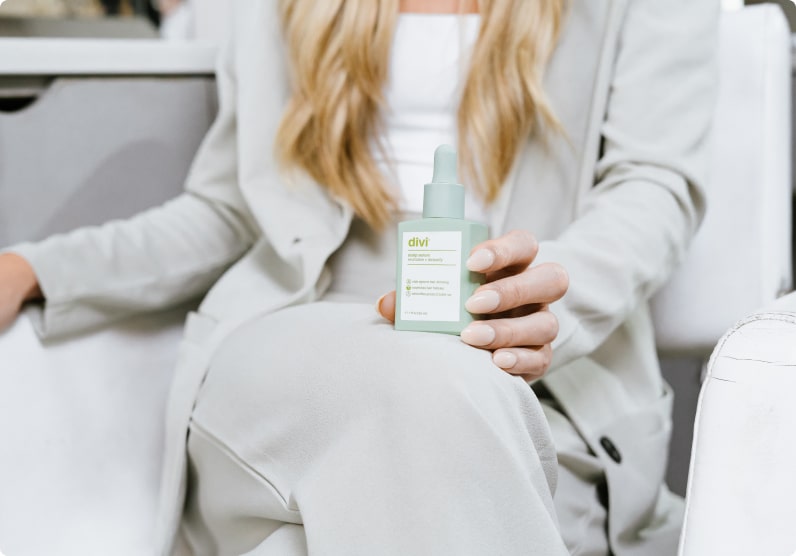
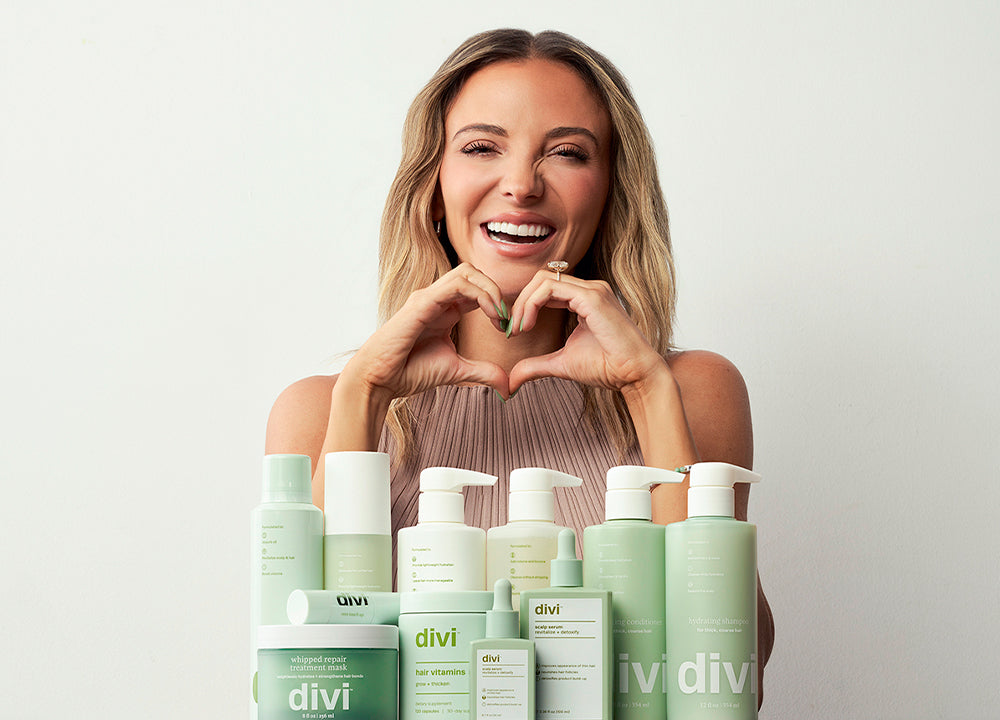
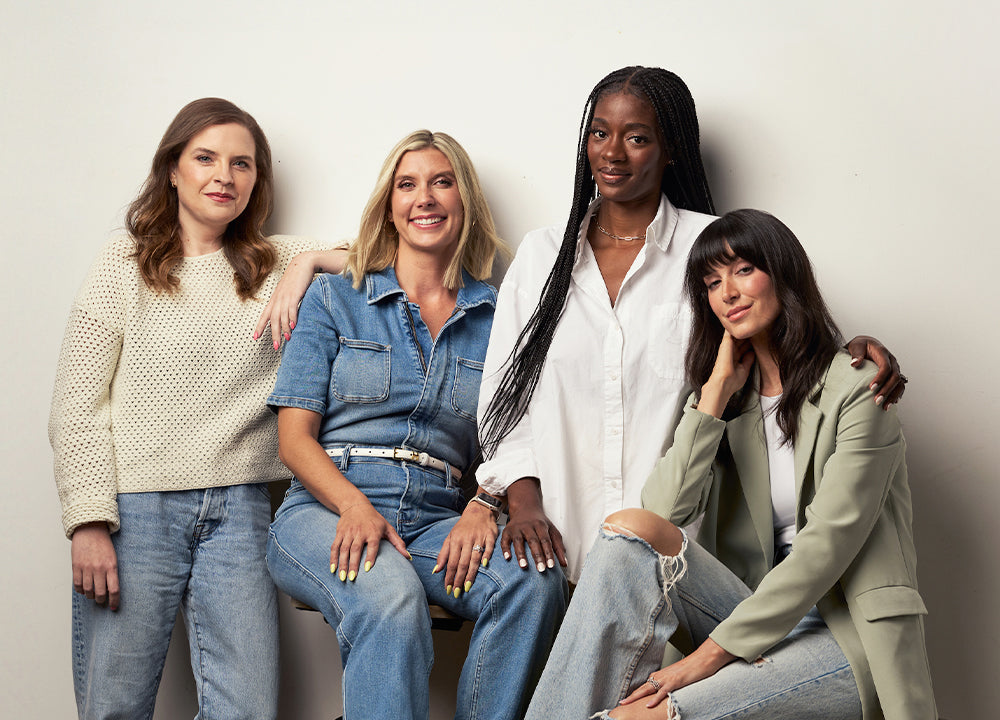
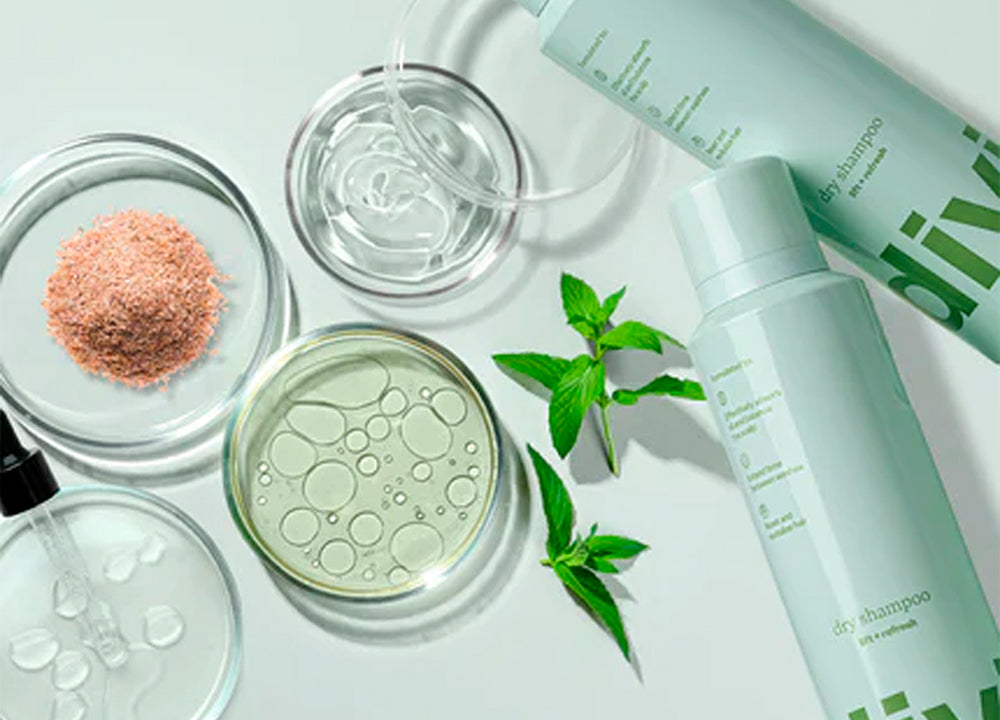

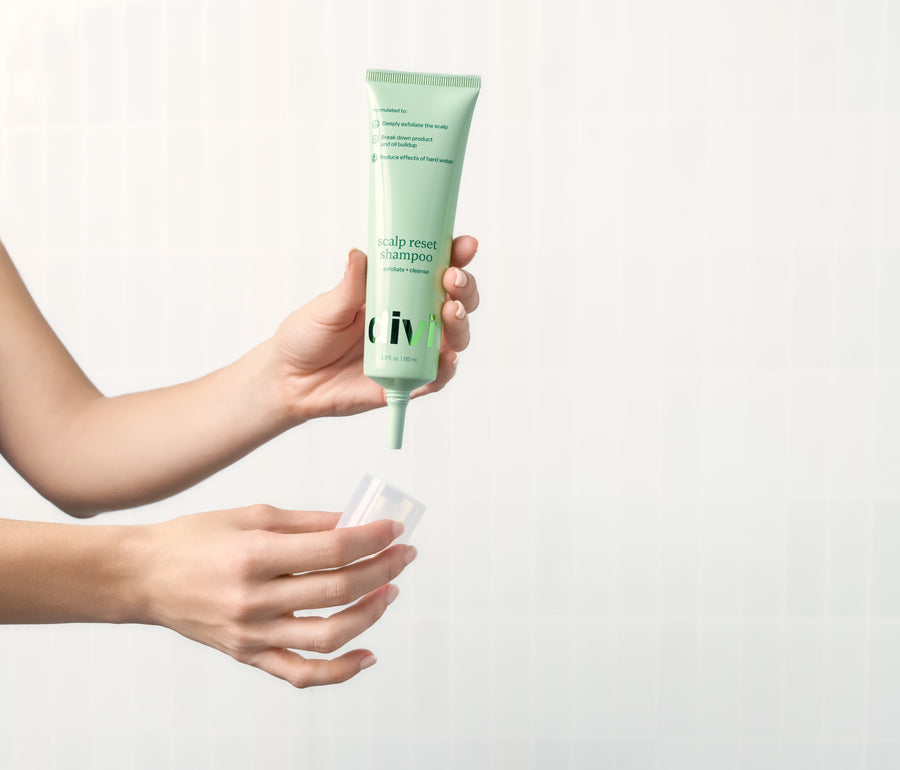
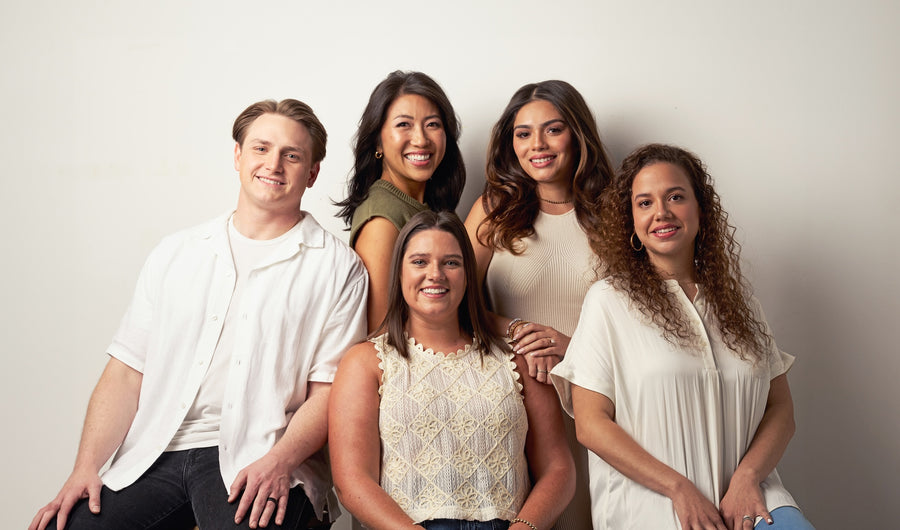
 Scalp Serum
Scalp Serum
 Scalp Reset Shampoo
Scalp Reset Shampoo
 Dry Shampoo
Dry Shampoo
 Best Sellers Bundle
Best Sellers Bundle
 Weekly Reset Duo
Weekly Reset Duo
 Root Touch Up
Root Touch Up
 Strand Plumping Styling Cream
Strand Plumping Styling Cream
 Root Reset Duo
Root Reset Duo
 3-in-1 Leave-In Conditioner
3-in-1 Leave-In Conditioner
 Air Dry Cream
Air Dry Cream
 Wash Day Essentials
Wash Day Essentials
 Frizz-Fighting Trio
Frizz-Fighting Trio
 Home & Away Dry Shampoo Bundle
Home & Away Dry Shampoo Bundle
 Volumizing Shampoo & Conditioner
Volumizing Shampoo & Conditioner
 Jumbo Volumizing Shampoo & Conditioner
Jumbo Volumizing Shampoo & Conditioner
 Volumizing Starter Bundle
Volumizing Starter Bundle
 Major Volume Bundle
Major Volume Bundle
 Volume Rescue Trio
Volume Rescue Trio
 Hydrating Shampoo & Conditioner
Hydrating Shampoo & Conditioner
 Whipped Repair Treatment Mask
Whipped Repair Treatment Mask
 Hydrating Starter Bundle
Hydrating Starter Bundle
 Hydration Heroes
Hydration Heroes
 Travel-Sized Volume Duo
Travel-Sized Volume Duo
 Travel-Sized Hydrating Duo
Travel-Sized Hydrating Duo
 Divi's Discovery Set
Divi's Discovery Set
